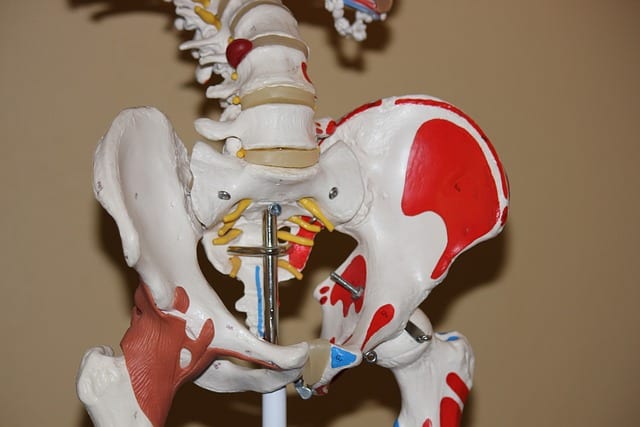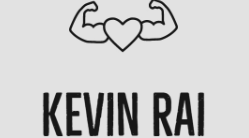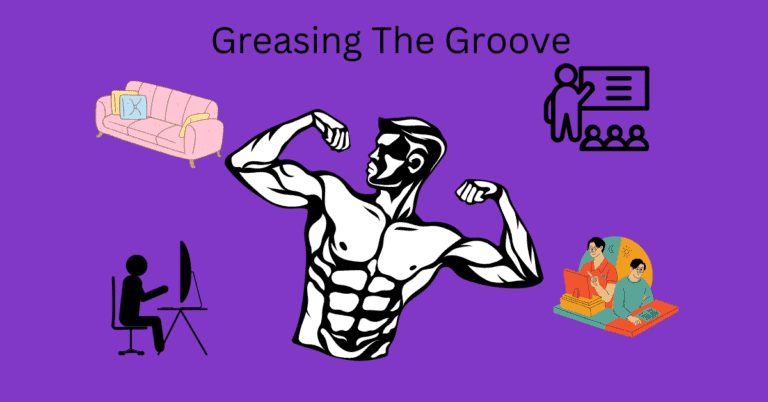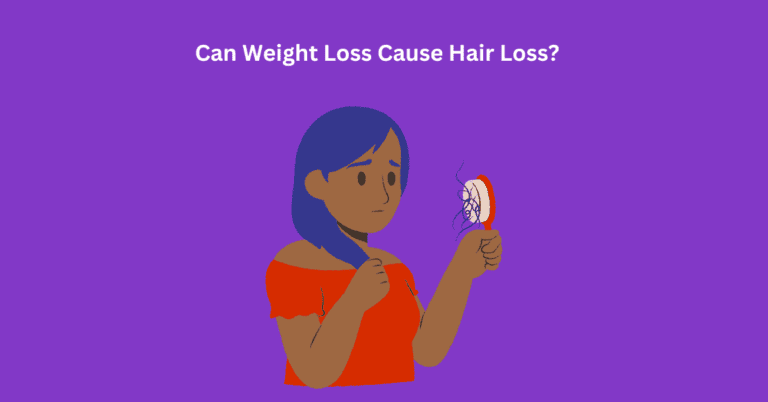Strengthen Your Hips: 9 Intense Gluteus Minimus Exercises

The gluteus minimus muscle, located deep in the hip, plays a crucial role in hip stability and movement
While its larger counterparts, like the gluteus maximus, tend to hog the limelight, it is important not to underestimate the power of this small yet mighty muscle as it deserves attention for its contribution to overall lower body strength & stability.
In this content, we will explore the importance of including gluteus minimus exercises in your workout routine and provide a comprehensive guide to help you strengthen this vital muscle.
What Are The Best Gluteus Minimus Exercises?
- Side-Lying Clamshells
- Standing Hip abduction
- Fire Hydrants
- Single Leg Glute Bridge
- Side lunges
- Bulgarian Split Squat
- Side Plank With Hip Dip
- Plank Jacks
- Lateral Banded Walk
Side-Lying Clamshells
Performing Side-Lying Clamshells is a great way to target and strengthen the gluteus minimus and medius muscles.
This exercise is simple to execute making it great for beginners.
- Begin by placing down an exercise mat or any type of comfortable mat~ then lay down on your side.
- Place your bottom arm under your head, using it as a support pillow.
- Keep your feet together and your knees bent at a 90-degree angle. Your top leg should be resting on your bottom leg.
- Activate your core muscles by gently drawing your navel toward your spine.
- Without rotating any of your body parts (mainly your hips and pelvis) only lift your top knee as far as possible for you.
- Pause briefly at the top of the movement and focus on contracting your glute muscles.
- Slowly lower your top knee to meet your bottom knee, maintaining control throughout the descent.
- Perform 10 reps of 3 sets for each side.
Additional Tips
- A common mistake people make is tilting their hips forward or backward while lifting the knee. The only body part that should be moving is your top leg.
- Focus on using your glutes to initiate the exercise and control the movement, rather than relying on momentum.
- Engage your core to help keep your body stable.
- Maintain a slow and controlled tempo, this will allow a better mind-muscle connection.
Standing Hip abduction
This exercise requires you to balance on one foot, so it can be tricky to achieve a correct form.
Therefore, you can grab onto a chair or a wall for added support, until you feel comfortable performing the exercise without assistance.
- Stand up tall with a good posture~ shoulders rolled back, core engaged, slightly lifting the chest and feet shoulder-width apart.
- Shift your body weight onto one leg and slightly lift up your other foot.
- Initiate the movement by slowly lifting your non-standing leg directly out to the side. Lift the leg as high as your body allows without leaning your torso or shifting your hips.
- Pause at the top for a few seconds and squeeze the glute muscles.
- Slowly lower your leg down to the starting position.
- Repeat for 10-15 reps before switching to your other leg.
Additional Tips
- Try to prevent swaying your upper body as you move your leg.
- If most of your attention goes to keeping your body balanced, you might not get a full activation of your targeted muscle~ in this case hold on to a stable object for support.
- Don’t use momentum to lift and lower your leg~ control your pace.
Fire Hydrants
This can be an awkward movement to perform since it’s meant to resemble a dog doing its business on a fire hydrant.
Nevertheless, it’s a great exercise to help improve hip mobility & stability and strengthen your gluteus minimus.
- Get down on a mat with your palms stacked under the shoulders and knees below your hips.
- Keep your back flat and avoid overarching or rounding your spine.
- Lift one of your knees out to the side at a 90-degree angle, to open up the hip.
- Pause at the top to feel your glutes burn and gradually lower your leg down.
- Repeat the movement for 10-15 reps and switch to the other side.
Additional Tips
- If you are having trouble executing the movement, you can try imaging and imitating a dog lifting its leg to a fire hydrant.
- The point of this exercise is not to lift your leg as high as possible. Trying to do so can cause your hips to rotate as well~ instead lift until you feel some restriction in your joints even if that means you are only a few inches above the ground.
- Maintain a neutral spine by tightening up your core.
Single Leg Glute Bridge
This exercise is a variant of the normal Glute Bridge done with both legs.
However, doing them on one leg adds a balancing component to the exercise, forcing your glutes to work harder to stabilize your body.
- Lay flat on the ground, with your fingertips pointing forward.
- Bring one foot close to your fingertips.
- Lift one leg in front of you parallel to the ground or have a slight bend in your knee.
- Press through your planted foot and drive your hips up towards the ceiling, lifting your glutes off the ground.
- Use your glute muscles to lift the hips while maintaining total control.
- Slowly lower your hips back down toward the ground, maintaining control and keeping your core engaged throughout the descent.
- Repeat for 9-12 reps and switch to the other leg.
Additional Tips
- Avoid tilting your hip to one side, both hips should be in line with each other.
- Keep your supporting foot firmly planted on the ground throughout the exercise.
- Maintain a neutral spine throughout the exercise.
Side Lunges
Side lunges are compound movement that not only give your gluteus minimus the love it deserves but also target the quads and hamstrings.
- Stand up tall in a spacious area with your feet hip-width apart.
- Take a big step to one side of your choice but for this example let’s pick your right foot.
- While stepping to the side, also shift your body weight onto the right leg and slowly lower your body by bending the knee. Your left foot should not move and the portion should remain straight.
- Ensure that your right knee is directly above your right ankle, and your torso remains upright throughout the movement.
- As you lower into the lunge position, focus on engaging the muscles of your right leg, particularly the glutes, quadriceps, and hamstrings.
- Push through your right foot and return to the starting position.
- Complete 8-10 reps and target your other leg.
Additional Tips
- Throughout the exercise try to keep your toes pointing forward and your torso upright.
- The width of the step should not be overly wide or too narrow~ play around with it to find a suitable distance for you.
- Your right knee and toe should be lined with each other.
Bulgarian Split Squat
As the name suggests the exercise originated from Bulgaria, where it was used to develop the strength of the lower half by weightlifters.
Don’t worry we don’t need to lift as heavy as them to get the benefits of this great exercise.
- Firstly you need to find a stable platform, preferably no higher than your knees.
- Place one foot on top of the platform with your top of the foot firmly planted on the surface.
- Take a step forward with your other foot, positioning it a comfortable distance away from the platform.
- Lower your body until your back knee is just about to touch the floor. Also, your front thigh should be parallel to the floor.
- Push through your front heel and extend your front leg, lifting your body back up to the starting position.
- Repeat for 8-10 reps and switch legs.
Additional Tips
- Try to aim for a 90-degree angle of the knee at the bottom of the movement.
- Your front heel should stay planted on the floor.
- Your torso should not be fully upright, but rather there should be a slight forward lean.
Side Plank with Hip Dip
Side plank with hip dip is at a higher difficulty level than the other exercises on the list because it requires strength in your obliques, hips, and shoulder to execute the movement efficiently.
- Lay down on your right side first with your legs fully extended.
- Place your right forearm on the ground directly below your shoulder, so your elbow is aligned with your shoulder.
- To provide your body with extra stability, place your feet on top of each other~ the left foot on top of the right one.
- Press through your forearm and lift your hips off the ground until your body is parallel to the floor.
- Slowly lower your hip back down until it’s right above the ground and shoot yourself up again back to the side plank position (that’s 1 rep).
- Perform 8-12 reps on each side.
Additional Tips
- Don’t shift much of your body weight onto your foot~ a significant amount of weight should be held by your shoulders and hips.
- Avoid rotating your hips during the side plank~ your hips should only move up and down in a straight line.
- As you get tired you might start losing your position and start arching your lower back. If you begin to notice this, take a short breather and continue the workout.
Plank Jacks
The plank jacks are a dynamic variation of the traditional plank exercise. It involves you getting into a plank position and jumping in a jumping jack motion.
- Get into a high plank position~ from heels to your head it should form a straight diagonal line.
- Same as what your feet would do in a jumping jack, that is what you are aiming to achieve with this exercise.
- Repeat the movement for 15-20 reps.
Additional Tips
- While jumping ensure your upper body positioning does not get compromised by avoiding the sagging of the hips too high or low.
- Try to keep your hand under your shoulder and distribute your body weight evenly.
- Softly land on the ball of your foot when jumping to minimize impact.
Lateral Banded Walk
This exercise goes by a few names like monster walk and side band walk.
Walking sideways with a resistant band on your lower leg creates an external force that the gluteus minimus must work against to abduct the hip~ this tension will help build strength in the muscle.
- Wrap a resistant band right above your ankles.
- Position your body by having your feet hip-width apart and slightly squatting down.
- Take a small step directly to the right side with your right foot and follow with your left foot, maintaining the same distance between your feet.
- Continue taking 15-20 small steps at a time, then walk to the other side.
Additional Tips
- Avoid crossing your feet or allowing them to come too close together~ keep them at a hip-width distance to maintain constant tension on the band.
- Be in a quarter squat position while walking, this will allow for greater muscle activation.
- Don’t take huge steps as this inflicts additional pressure on your knees.
What Is The Gluteus Minimus Muscle?
Anatomy of the gluteus minimus muscle
The gluteus minimus muscle is situated deep within the gluteal region, beneath the larger gluteus medius muscle.
It originates from the outer surface of the ilium, specifically from the area between the anterior and inferior gluteal lines. From its origin, the muscle runs diagonally downward and outward, forming a thick band of muscle fibers.
The muscle then attaches to the greater trochanter which is the top part of the femur.
The gluteus minimus muscle attaches to the posterior and superior aspect of the greater trochanter, positioning it in close proximity to the gluteus medius muscle.
The Function Of Gluteus Minimus
The gluteus minimus together with the gluteus medius works to assist you in hip abduction~ abduction refers to moving a body part away from the center of your body.
When the gluteus minimus contracts, it works in conjunction with the gluteus medius to stabilize the pelvis and prevent it from dropping or tilting excessively during activities such as walking, running, and jumping.
In addition to hip abduction, the gluteus minimus also contributes to other movements of the hip joint, including internal and external rotation. These actions allow for a greater range of motion and control during various physical activities.
Symptoms Of A Weak Gluteus Minimus Muscle
Even though it’s the smallest muscle in the gluteal group, if a weakness arises in the gluteus minimus, it can get difficult to partake in normal day-to-day activities.
Here are some common symptoms:
Hip Instability
The gluteus minimus in combination with other muscles work together to stabilize the hip joint.
It supports keeping proper alignment of the hip joint and prevents excessive pelvic tilt or rotation.
Also, its role is to allow abduction of the hip by pulling your femur laterally away from the center of the body. This action helps to stabilize the hip joint and prevent it from collapsing inward during activities such as walking.
Therefore weakness in it can make your hips feel loose and unstable.
Poor Balance and Coordination
Without good hip stability, activities that involve a single leg such as walking or running can be challenging, due to weak gluteus minimus compromising your balance and coordination.
Knee, Hip, or Lower Back Pain
If the hips become less stable, this can alter your movement patterns and increase the stress on the knee joint~ resulting in knee pain or even injury.
Weak gluteus minimus muscles may also result in compensatory movements or overuse of other hip muscles, such as the hip flexors, which can lead to hip pain and dysfunction.
Back pain can arise from the disturbance of the pelvis region. This can result in muscular imbalances, altered movement patterns, and increased strain on the muscles of the lower back
FAQ
What Causes Tight Gluteus Minimus?
The most common cause of tight gluteus minimus is having a sedentary lifestyle where you are sitting down for a prolonged period, which can lead to shortening and tightening of the muscle~ reducing your overall flexibility & range of motion.
On the flip side, overworking the muscle through physical activities without proper rest can also cause the muscle to tighten up.
Can Weak Gluteus Minimus Muscle Lead To Back Pain?
Yes, weak gluteus minimus can contribute to back pain. This is because the gluteus minimus together with other muscle groups such as the core muscle, plays a role in stabilizing the pelvis, any weakness can throw off the natural curvature of the spine.
How Long Does It Take To Build Strength In Gluteus Minimus?
Like any muscle group, it takes time to build strength in the gluteus minimus.
The speed at which you can gain strength will depend on your current fitness level, consistency of training, and recovery.
You must allow your body to adapt to the training by going at a slow pace in the beginning and gradually increasing the intensity over time~ this will prevent you from overworking the muscle or causing any injuries.
Conclusion
It might get tempting to work out other flashy muscles but don’t let the size of the gluteus minimus fool you, they are just as important.
Its main role is to stabilize the hip joint and allow the hips to abduct.
In your training routine, you should aim to target the gluteus minimus 2-3 times a week, with lower volume & intensity at the start, which will create the perfect space to build strength.
Furthermore, remember you don’t have to do all of the exercises in this list~ pick a few which you prefer and add them to your plan. But it is important to switch up the routine once in a while to add variety to your workout.


